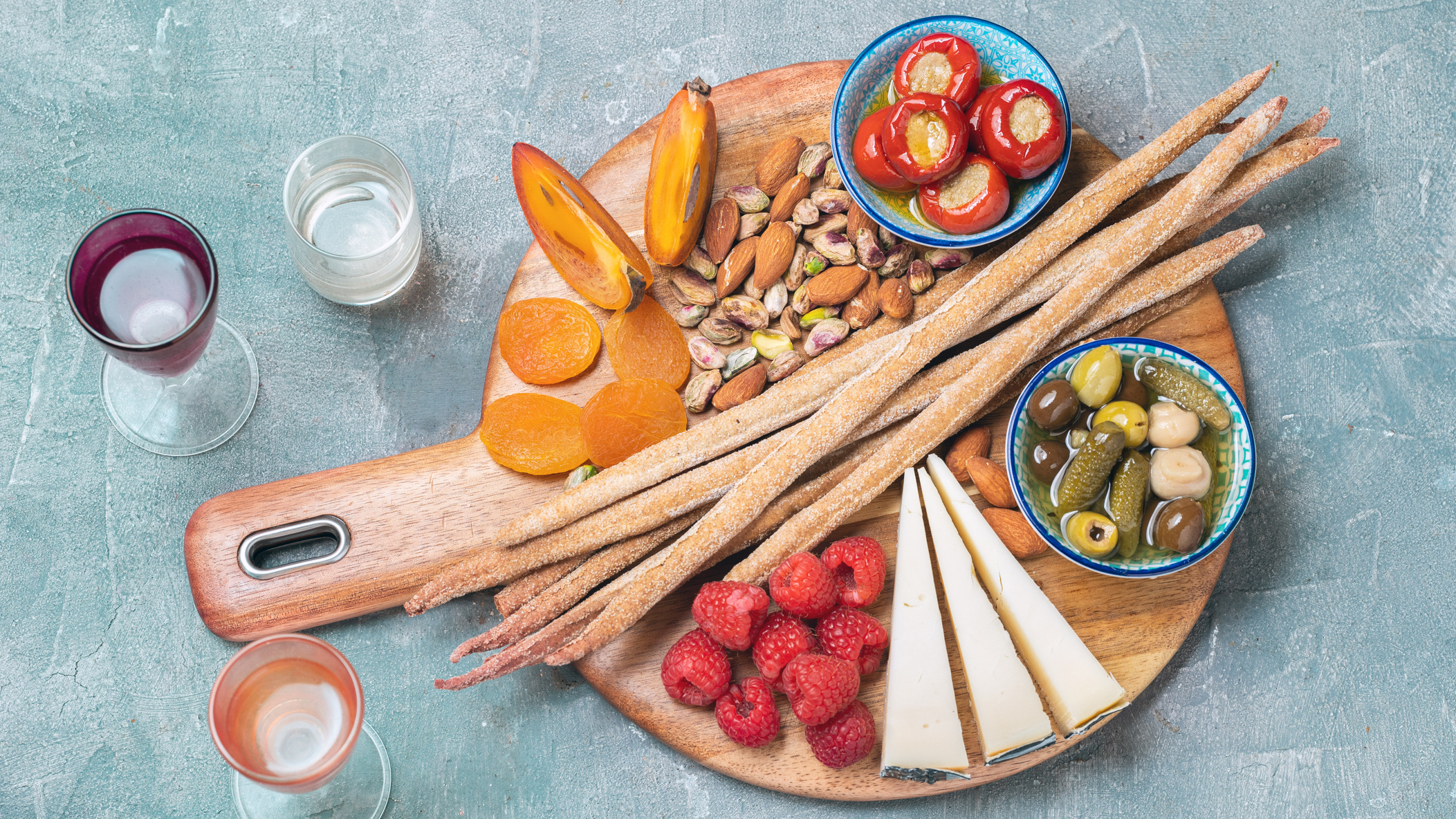I tried eating 30 different plant foods in a week—here's how I did it
I wanted to see if I could hit the experts' recommendations to improve my gut health, and it only took a few small tweaks


I like to think I'm a healthy eater. I always hit my five-a-day goal and am one of those annoying people who would often choose to eat a piece of fruit over a chocolate bar.
However, what I've realized is that I'm often eating the same plant-based foods each day and, while there are worse things and I could pick up a vegan cookbook for some inspiration, currently my gut doesn't benefit from a diverse diet.
Why is this important? As Rhiannon Lambert, a registered nutritionist and the author of The Science of Nutrition, explains, the health of our gut can be determined in part by the variety of good bacteria thriving there. One way to encourage this diversity is through eating as many different plant-based foods as possible.
"Research from the American Gut Project has suggested that gut microbe diversity—the different types of gut bacteria present within our gut—is higher in people who consumed 30 types of plant-based foods per week compared with those who ate 10 or less," says Lambert.
"What this research tells us is that a diet that contains more plant-based foods, such as fruit, veg, wholegrains, beans, pulses, legumes, nuts, seeds, herbs and spices, has a beneficial effect on our guts, which in turn may have better outcomes for our overall health."

Rhiannon Lambert is a registered nutritionist, a podcast host and the founder of Rhitrition+. She is the author of a number of books including The Science of Nutrition, Re-Nourish: A Simple Way To Eat Well, and Deliciously Healthy Pregnancy.
Encouraged by the suggestion to aim for 30 different plant foods a week, that's what I did. I made it my mission to incorporate as wide a variety of foods into my diet as possible. The good news is that it's not just fruit and veg that count towards the 30.
"Plant-based foods also include wholegrain cereals, nuts, seeds, pulses such as beans, chickpeas, lentils and peas, tofu, tempeh, herbs and spices, and soy-based or other plant-based dairy and meat alternatives," says Lambert.
Start your week with achievable workout ideas, health tips and wellbeing advice in your inbox.
While servings that count towards your five-a-day should be 80g, experts advocating for 30 plants a week talk about a "substantial" portion rather than a specific amount. By the way, herbs and spices only count as a quarter of a point.
I'm pleased to say that after a week of meal-planning, mindful snacking and from-scratch cooking I achieved my goal. In fact, I totted up 33 plant-based foods. It wasn't as challenging as I thought it might be, although it required more thought and organization.
1. I planned all my meals
I'm a big meal planner. It negates the "what shall we have for dinner tonight?" debate, helps you eat healthily on a budget, and reduces food waste. During the challenge, the practice came into its own.
Sure, I had to spend more time planning and thinking about the meals I was going to cook to ensure I would hit my total, but it meant I knew I could reach my goal before the week even started—and I had everything in my cupboards that I needed.
2. I added extra veggies to everything
One of my techniques was to add veggies to everything, even if the recipe didn't call for it. It meant my meals were nutrient-dense. Making a spag bol? Add a handful of lentils to the sauce. Fancy scrambled eggs on toast for lunch? Slice up an avocado to have on the side.
The same goes for fruit, as well as spices and herbs. I loved adding a mashed banana to my normal morning porridge with blueberries and cinnamon on top. You can do this with any quick breakfast idea too, so you get a more varied start to your day.
3. I made the most of my freezer
Something I struggled with was trying to balance my love of batch-cooking with the idea of a diverse diet. Usually, I'll eat the same meal for a couple of days in a row to save on cooking time and make my life easier, though I knew it would be harder to hit my goal if I did this.
That's why my freezer became my new best friend: instead of eating leftovers for a couple of days on the trot I froze them. My aim is to get into a routine of batch-cooking extra food for the following week and eating leftovers from the previous week in an effort to keep my weekly diet varied.
There's another reason why I loved my freezer so much: frozen veg. Trying to ramp up your fruit and veg intake means you can have a fridgeful of fresh produce, which doesn't always last or get eaten, but frozen (or tinned) options have a longer sell-by-date.
4. I swapped white carbs for wholegrain
Making tweaks to your shopping habits can add those all-important points to your diet. I chose wholegrain pasta over its white counterpart and wholemeal bread over more-processed options during the challenge. I found it was an easy way to get closer to my goal.
5. I made my snacks work harder
It’s not just at breakfast, lunch and dinner that you can add to your total. I put more thought into my snack breaks. I enjoyed things like carrot, cucumber and pepper sticks with hummus as a snack, as well as apple and peanut butter, and a handful of cashew nuts.
6. I was mindful when eating out
The task is more challenging if you eat out regularly. During my week I ate out twice and was left scratching my head at the menu a bit. I'm a believer in balance, so I feel you should be able to enjoy food without constantly thinking about its nutritional value.
But it's also good to be mindful about what you are eating when possible. I found there was usually a good nutrient-rich veggie option on the menu and some of the nibbles on sharing platters, such as olives and artichokes, can contribute to your plant points.
Is eating 30 plant foods a week worth it?
How did I feel after the week? Great! I always find my body responds well to healthy food and that—coupled with good sleep and exercise—meant I felt mentally and physically good.
There is a danger that moving towards this way of eating can cause discomfort, as those not used to a high-fiber diet may find their gut is overloaded, but I didn’t experience this, probably due to the fact I already ate a lot of fruit and veggies. All in all, it’s something I’ll be looking to continue with.

Claire is a freelance journalist with more than 15 years experience. Specializing in health, wellbeing and women’s lifestyle topics, Claire was previously the editor of Natural Health magazine and Health&Wellbeing magazine, and has written for titles including Stylist, Platinum, MadeForMums, Happiful, and In The Moment.